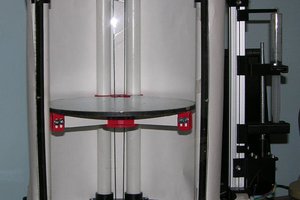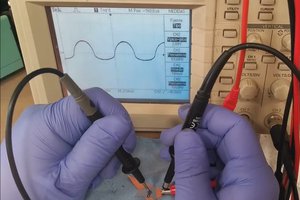I have a very specific development cycle for projects like this. First build something out of legos and see where the difficult bits are. A twisted rod or a brick flying off is a pretty good indication where one might want to rethink structure and power transfer. After this step I figure out what materials are best suited to make the unit proper. This often results in something that has great potential for improvement, resulting in a rebuild. This is why a lot of my projects will carry at least a Mark III label when I get it to work the way I wanted.
This project however, is amazingly stuck at version II and it's fully featured and damn near complete and perfect for my needs. What gives?
To be honest, the layout, electronics, software and mechanics of this thing have changed so many times (in small iterations), that I could possibly call this Verto Mark VI or thereabouts! This means that the projects evolution is far more interesting than the actually spinny-clicky bit, which is quite mundane if it just works (and very irritating when it doesn't). I'll try to describe the concepts, learning curves and thought processes that went into this thing.
Need a spinny photography thing
I do a lot of object photography of archaeological artifacts. This can be pottery of various shapes and sizes, small objects like coins or valuables and other interesting objects we dig up. In a lot of cases, two or three shots just do not do the object justice, so I wanted a turntable to easily record batches of objects and publish them as virtual objects or perhaps 3D objects after processing. This is a pretty nice way of presenting the objects and it is also useful in a digital referencing collection sort of way.
So what I needed was a fast, flexible, repeatable process that could handle the entire range of stuff I get to dig up and take pictures of.
Verto Mark I
The Lego prototype worked remarkably well up to a few kilograms, but the plate wandered just ever so slightly and with heavy objects, the drive could not keep up. The image processing also left something to be desired and the NXT motor hitting the space-bar to snap a picture in my motioncapture software was...True to the bodgers ethos..
Verto Mark II.0
For the rotating bit, I found a cheap rotating plateau at IKEA mean for presenting cakes or something else extremely necessary and useful. It used a lazy Susan which looked like it could support wedding-cakes made from uranium, the the plateau wasn't centered very well. After remounting the plateau I started to build a case for the unit.
In the parts bin, I had a continues servo and some *duino boards. I rubberized the bottom of the plateau by gluing rubber bands to it. Yes, I was planning on using a continues servo as a friction drive.. Extremely bad idea! Not because it doesn't work, but because it almost works, but never quite!
First of all, I completely forgot that you can't control a continues servo like a normal one, meaning that I needed to need to rotated it based on time (and power). Well, this started out promising. With a bit of tinkering, I got the unit to do large steps and end up pretty much where it started, but for small steps it completely failed do to accumulated slippage on the rubber.
Then there was the problem of power. I wanted the unit to operate on batteries for some odd reason (because in the field, shooting conditions are so predictable and nice!). Naturally with different batteries and voltages, the travel of the plateau differed necessitating a calibration nearly every damn run.
Mark II.1
I needed to know where the damn platform was so I needed a form of rotary encoder in the platform itself. The servo would not work because of the slippage. So what I did was the most reasonable choice, surely! I gutted an optical mouse (I'm obsessed with mice?) and wired the ADNS sensor directly to the Arduino. The remainder of the mouse was put on spring suspension and jammed against the plateau. Now I could read the movement of the plateau and...
Read more » Timescale
Timescale
 Douglas Miller
Douglas Miller
 Nixie
Nixie
 Paul Crouch
Paul Crouch